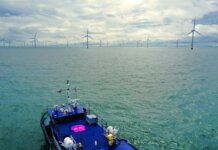The following is adapted from Energy Innovation’s Designing Climate Solutions: A Policy Guide for Low-Carbon Energy.
Reducing the risk of investment in renewable energy projects is a critically important step to decarbonizaing energy systems to prevent dangerous climate change, with three major components: technology risk, development risk and pricing risk. Addressing each of these risk profiles helps investors-utilities, banks or other institutions find the necessary will to invest in renewable projects.
Investment-Grade Policy: De-Risking Renewable Energy Projects
Renewable energy technologies have high initial costs but then cost very little to operate because they do not require fuel. One consequence of this capital-intensive nature is that renewable energy is very sensitive to the cost of capital – that is, the interest rates or return rates demanded by those who lend or pay for renewable energy technology up front. For example, high interest rates can significantly increase the overall cost of a wind farm.
Return requirements and interest rates, in turn, are driven by risk. Investors properly demand higher returns when they face higher risks. So, if smart public policy can drive down risk, it can drive down cost. And the difference can be dramatic, cutting overall costs by close to 50% in some cases.
Risk comes in many flavors: Technology can fail, it can be difficult to site a wind farm, construction may be delayed because of permit problems and the sale price of electricity might be unknown. Most of these risks can be mitigated by smart public policy without compromising key public values. And where that is done, clean energy becomes cheaper.
The first of these risks, technology risk, is substantially reduced for solar PV and onshore wind, which are now reliable, inexpensive and underwritten by a wide range of equity investors and project finance lenders. Other technologies are still approaching this status in many markets, including concentrated thermal solar and offshore wind. Clean energy technologies with low technology risk can nevertheless suffer from development and market uncertainty in the form of project development risk and price certainty risk.
Project Development Risk
Development risk comes in three principal forms: siting, permitting and transmission access. Siting risk has many dimensions, such as landownership, usage terms and rights, access to roads and transmission, and environmental or cultural conflicts. Each conflict raises uncertainty – sometimes a decade’s worth – that can kill a project. If a developer has to spend two years trying to get siting questions answered, that means two years with no returns, two years of climbing expenses, two years of expiring tax breaks and so forth. Good policy can drastically cut this uncertainty by pre-zoning land and engaging stakeholders early, while setting clear requirements and time frames for permits.
Once a site has been selected and approved, dozens of other permitting requirements arise, including access to land, construction standards, fill issues, inspections, noise, traffic, visibility, dust, worker protection and so forth. And these permits are usually required by many different federal, state, county and city offices. The upshot can be a paper blizzard that adds years to a project.
A jurisdiction with a goal of deploying clean energy can clear out this sort of costly clutter by thinking ahead, setting clear standards, and then offering rapid permits for projects that meet those standards. This is not a simple process, but it can have profound risk-reducing effects.
Large-scale solar and wind projects also need ready access to transmission lines to get their power to market. For sites without ready access, the aforementioned siting and permitting issues apply doubly to additional transmission projects. Building transmission lines that link the best, low-conflict renewable resource areas with high-demand cities makes renewable penetration faster and cheaper. Texas illustrated this beautifully when it established Competitive Renewable Energy Zones, a planned strategy to build a suite of transmission lines connecting the windiest areas of Texas with load centers.
But even where access is available, it can be inhibited by overly complex interconnection standards, which in some jurisdictions seem designed to keep competitors out. The way around this is to have clear, straightforward interconnections and procedures – with reasonable time limits for handling permits – and to apply nondiscriminatory standards.
Some helpful design points for the interconnection process include reasonable but conservative screening to ensure an interconnection queue isn’t crowded with projects that will not be built, a queue that prioritizes contracted projects over non-contracted projects for the same reason, a study process that allocates costs fairly among all projects in a given cluster, and a principle that upgrades cannot be added outside the official process and can be added only at specified times within the process.
Selling the Power – Price Certainty Risk
The next major realm of uncertainty in developing a big renewable energy project is the price of the electricity generated. A long-term, highly certain price from a reliable purchaser makes it far easier to both invest capital at lower discount rates and raise competitive project financing. More generally, long-term power contracts also allow non-recourse financing, which allows developers that don’t have a large balance sheet to compete with those that do.
Utility-scale energy suppliers have different sales conditions depending on the regulatory system in which they operate, and there is quite a range. Traditional, vertically integrated monopolies – which own the power plants and transmission and distribution systems and sell directly to customers – can build their own power plants, or the utility may be the market maker, signing power purchase agreements with independent power producers.
At the other end of the extreme lie competitive power markets where electricity is sold in five-minute increments with the help of a day-ahead auction. Both of these market structures are possible simultaneously because deregulated retail utilities sign contracts with different vendors to hedge and reduce risk. In California, projects can have long-term contracts but participate in the day-ahead or real-time market with a portion of the power plant output that is not contracted.
Clearly, a certain long-term price is more likely with a power contract than with a daily auction, but even in competitive power markets, bilateral contracting can lock up prices for a long while.
Here are the ingredients of smart pricing:
- For a vertically integrated monopoly building its own power plants, the regulator should allow a 10- to 20-year cost recovery schedule – but should certainly benchmark the price against those offered in competitive markets so consumers do not overpay.
- For jurisdictions with the utility or the regulator as a market maker, offering solicitations to independent companies to build a new power plant, the regulator should offer 10- to 15-year contracts to bidders.
- For day-ahead and real-time competitive energy markets, the system should be structured to encourage a healthy volume of long-term bilateral contracts between energy marketers and energy suppliers.
In all cases, public incentives for clean energy should align with the time-scales needed for smart development (i.e., at least 10 years). Designing incentives over a long time horizon also helps avoid uncertainty about whether subsidies will be renewed, which can happen with subsidies that span only a few years at a time.
Energy Innovation’s Designing Climate Solutions: A Policy Guide for Low-Carbon Energy outlines 10 carbon emissions-reduction policies applied to 20 countries. The book is authored by Hal Harvey, CEO of Energy Innovation, a nonpartisan think tank focused on decarbonizing the energy sector, along with Robbie Orvis and Jeffrey Rissman of Energy Innovation.




